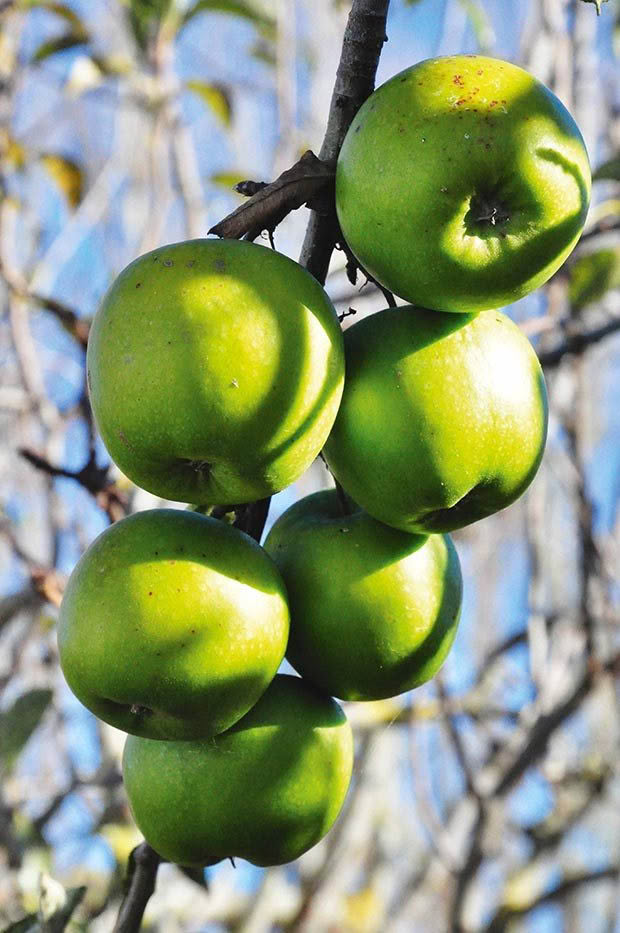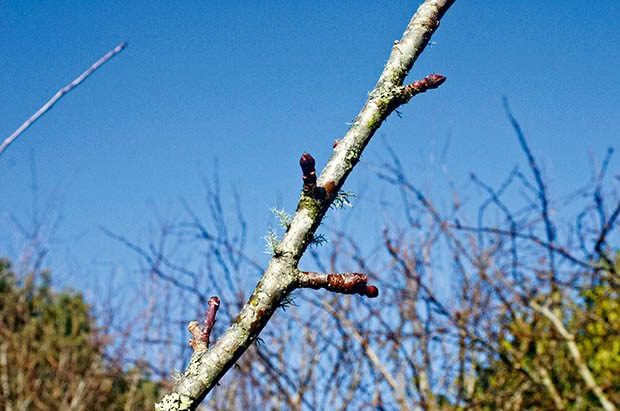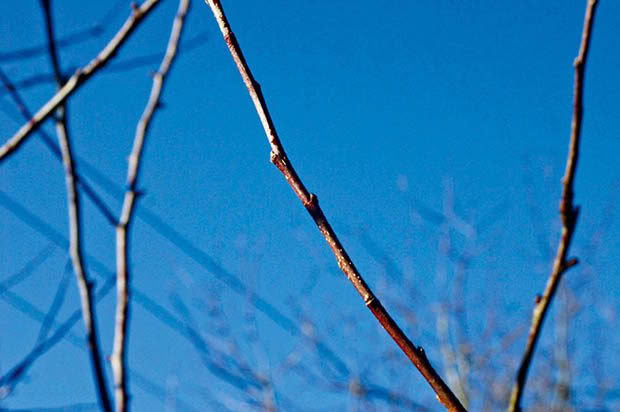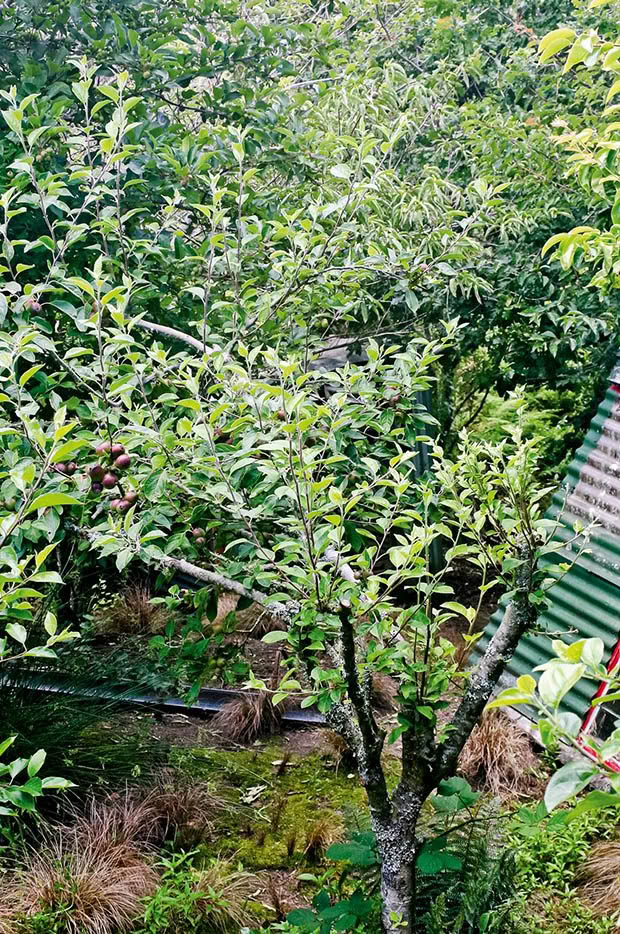4 steps to pruning an apple tree

Haven’t pruned your fruit tree in years? Here’s where to begin.
Words: Ben Gaia
Below is my unkempt Sturmer Pippin tree one dry day in late August 2014, still dormant before flowering. You can see lots of messy, crossed branches, some dead ones, and too many very tall shoots heading skyward. It probably hasn’t been pruned for more than five years. Ok, possibly 10. I waited for a sunny day in August, just before the tree blossomed.
Hardwoods are tough on steel blades so for this job, I used:
• a jacksaw
• loppers
• sharp secateurs
Tip: Oil and sharpen your tools before you prune each tree.
1. Start by removing what you don’t want.
Always remove branches that are too big or in the way, crossing other branches, and all rotten wood. Here, I cut three main stems short: one was too tall and mostly nonfruiting buds, one was too near the chook house and blocked the way to the feeder, and one was a dead branch coming from the base of the tree. One of my aims in pruning this tree was to reduce its height, from 3m to 2m overall, so it would be easier to harvest and more light could reach the fruit trees behind it.
2. Prune for good looks
You want to trim all the limbs down to the best-looking fruit blossom spurs. These fruit buds (below) are thinking of bursting into flower any warm spring day now. They are fat and feathery, on wrinkled, gnarly two-year-old (or older) wood. Blossom buds only form on wood more than two years old — younger wood is smooth in comparison.

A good place to prune small branches is at the ‘collar’ where the younger wood emerges from the older wood. You’ll see a change in colour, the older wood having developed a harder bark, the younger wood still looking brown and tender.
These slender buds on smooth, younger wood are leaves or branches waiting to grow. These are the growing points of the tree and they can be selected and left to allow new branches to grow. However, I removed all of these to concentrate growth into the fruit buds.
3. Prune off the non-fruit wood

Young wood, less than 1-year old showing leaf buds.
I chose to prune off non-fruit branches which take energy away from the ones that will produce fruit. These branches are generally smooth-barked, straight or vertical, and they’re extra-vigorous, growing up to 2m in a season, and show fine leaf buds, not the rounder fruit buds. I also trim the twiggy inner branches, although these sometimes carry blossom and fruit spurs which can be left on.
4. Clean up
Pick up all the prunings and remove them for a bonfire, or as firewood for next winter – larger apple branches make great firewood – or to use as chair legs. This tree has a fair amount of lichen and moss, a great sign of clean air. I like to leave most of the lichens on if they aren’t impeding blossoms. Lichen is not a parasite and it doesn’t sap the tree or harm it in any way, and I think it looks great.
THE RESULTS

Here’s the tree just a few months later, blossoming in October and starting to grow fruit in December.
WHY HARD PRUNING WORKS FOR APPLES

I can hear some of you crying in dismay “Oh, but that’s so drastic, and now your tree is only tiny!” But here’s what you need to remember: apples are from the rose family and you probably know, the harder you prune roses, the better they flower. I’m not saying you should chainsaw every branch to a stump, although that will invigorate a scungy old tree and get it blossoming from new branches after two years.
Pruning apple trees is about concentrating the amount of food and energy available in the tree into growing blossom and fruit, rather than producing too many branches and leaves. An overgrown, unpruned tree can often end up as all wood and shady foliage, with a few apples way up the tree, only harvestable by helicopter or microlight.
About the author
Ben Gaia grows trees in the extreme climate of the West Coast of the South Island and runs a mail order nursery for organic fruit and forestry trees, www.dialatree.co.nz
READ MORE

